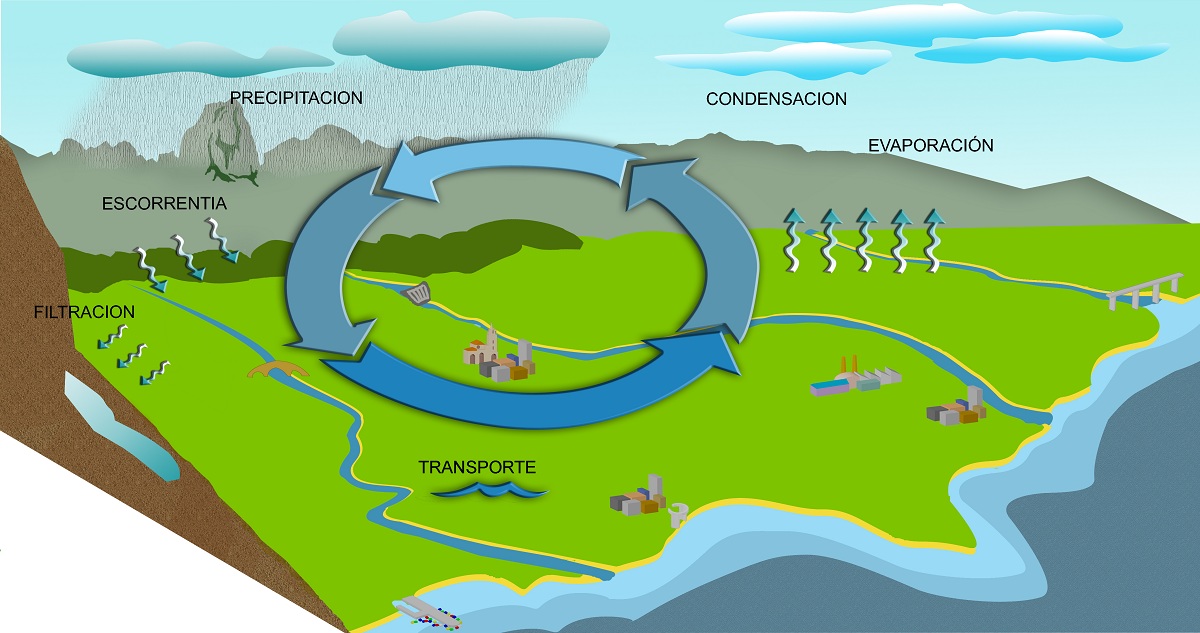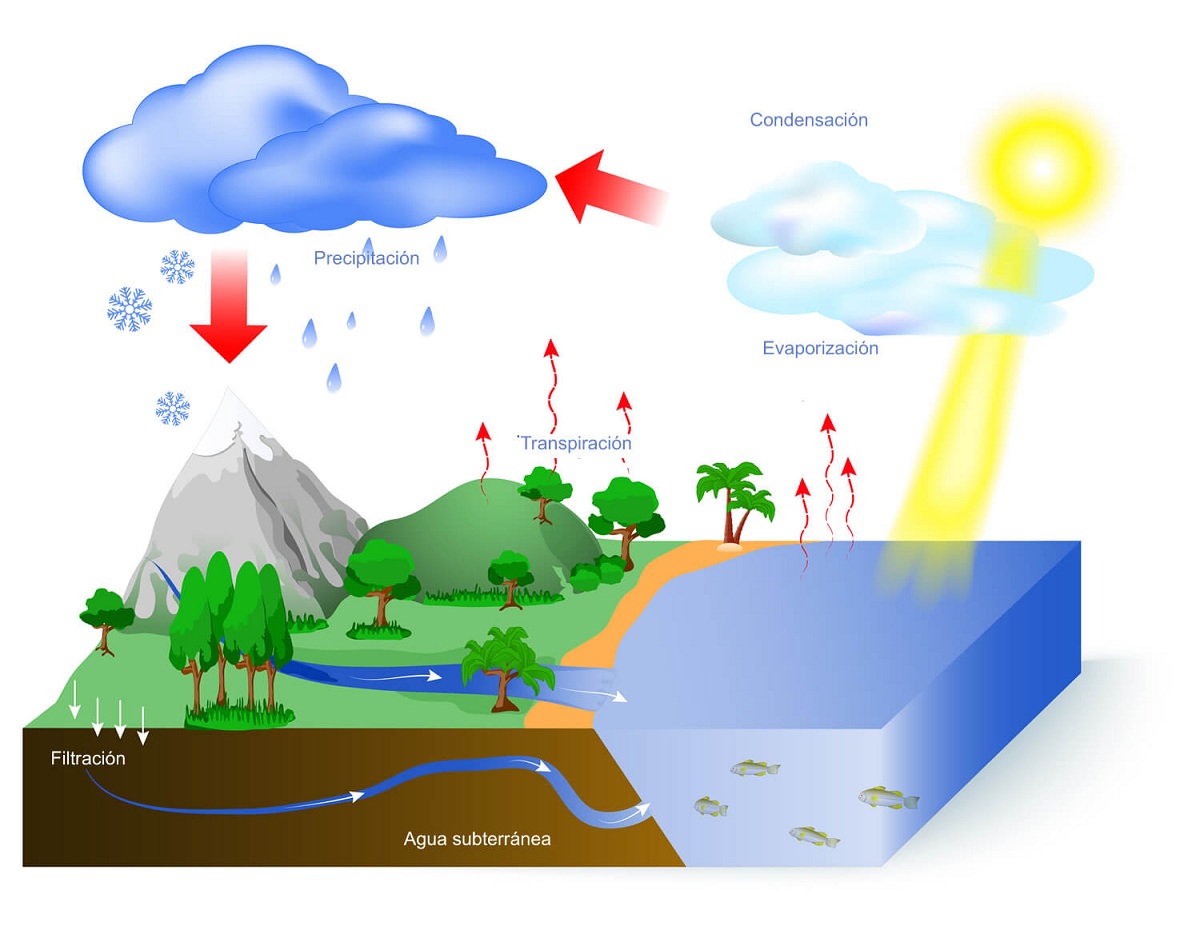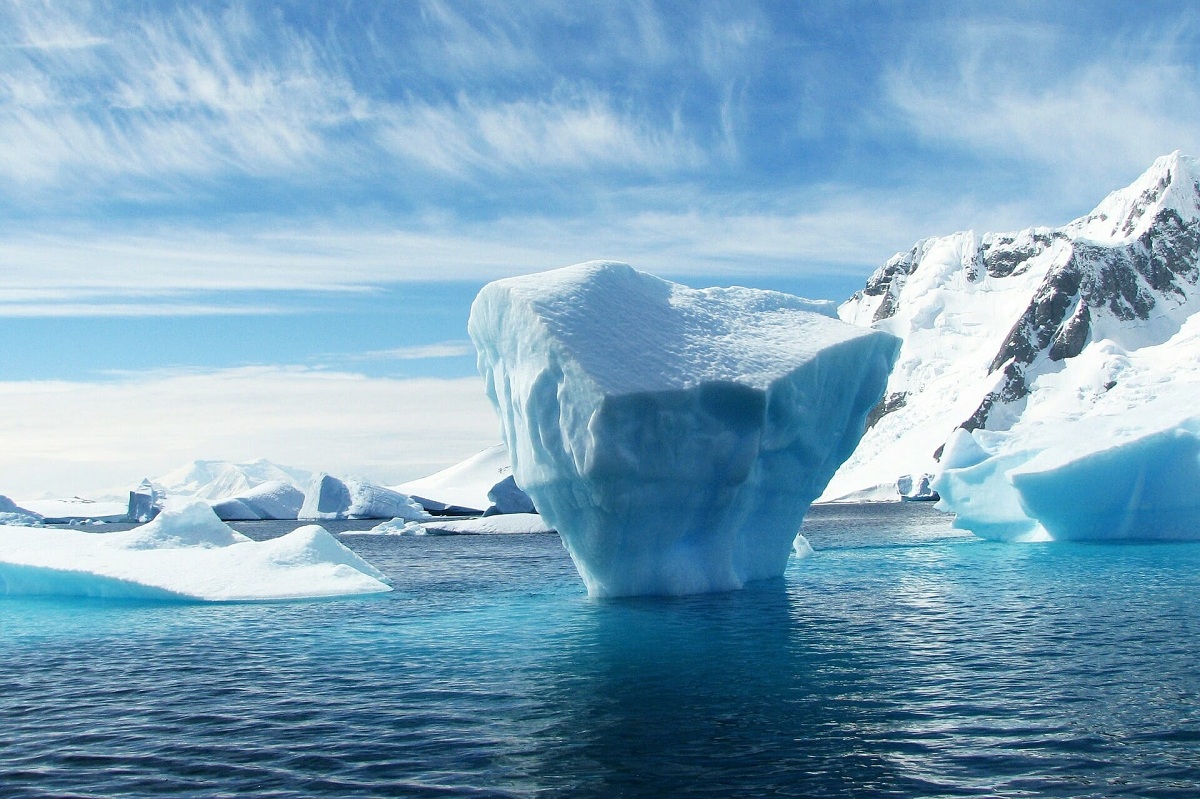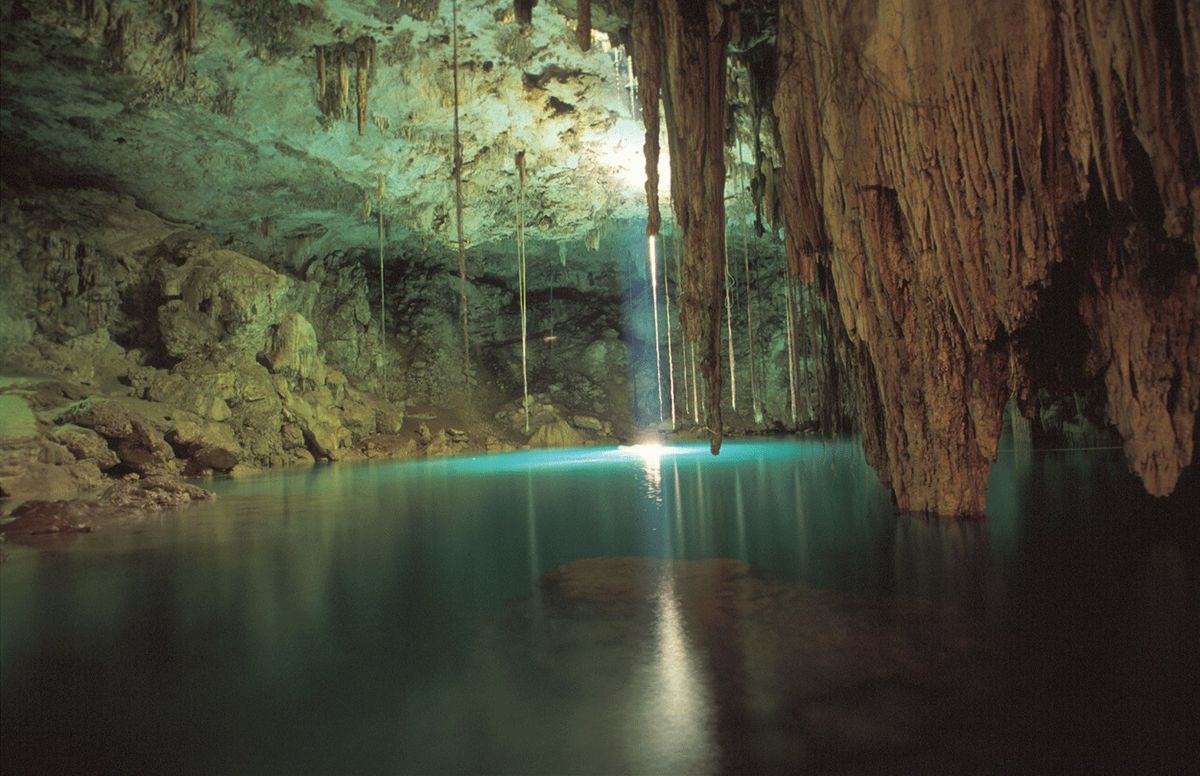
El hydrological cycle it is the continuous and cyclical movement of water throughout the planet. Through this cycle, water goes through the 3 possible states: liquid, solid and gas. From the beginning until the end of the cycle, the water goes from being a drop to ending up being billions of liters of water in the ocean.
In this article we are going to tell you everything you need to know about the hydrological cycle and its importance.
Functioning of the hydrological cycle

We know that water has a balance on our planet. There is always the same amount of water, but in different places and states. In general, the hydrological balance is usually constant, although there are water molecules that can circulate quite quickly. The sun is the engine that starts this whole cycle. It begins by heating the water of the seas and oceans. When this water evaporates it rises to higher altitudes to form clouds. It is at this time that the water is in a gaseous state. Once the appropriate temperature and atmospheric pressure conditions are met, precipitation takes place. Depending on the air temperature and the environmental conditions present, precipitations can be solid or liquid. In solid form it can be in the form of snow or hail.
One of the rain falls to the ground can be stored in the form of groundwater, by puddles, surface runoff, lakes, ponds, rivers, etc. If this happens, the water is again led to the sea where it will evaporate again due to the action of solar radiation and again they will form the clouds that will give rise to precipitation. This is the closing of the hydrological cycle.
Processes
We are going to see what are the main processes involved in the water cycle. There are many processes that intervene in the hydrological cycle and that is why they are kept in continuous movement. For example, some of the processes are responsible for evaporating the water. The upward air currents is are the result of evapotranspiration that comes both from plants during the photosynthesis process and from the evaporation of the soil and water bodies.
When the water vapor rises in the air, the lowest temperature is the one that is responsible for causing a condensation of the air mass itself to form clouds. The water particles within a cloud collide with each other to form larger water droplets. The water droplets need a hygroscopic condensation core to be able to join them. These nuclei are usually specks of sand, atmospheric dust or pollutants. If the drops of water are added and accumulated continuously, they become very heavy drops of water that fall under their own weight.
All the atmospheric conditions that form precipitation depend on the type of cloud that exists at that moment. The process by which a drop of water falls can take even thousands of years. That is, it can take years for the water turned into vapor in the atmosphere to fall back to close the cycle. It all depends on the place and the environmental conditions of the place where you are.
Duration of the hydrological cycle

Let's see what the relative duration exists in the hydrological cycle. When a drop of water from a cloud in solid form such as snow can accumulate on the polar caps of mountain glaciers. Once they have been stored in this way, they may not evaporate again and turn from a solid to a liquid for millions of years. This water can remain in this form stored for millions of years as long as conditions do not change.. Thanks to these situations, scientists can extract a great deal of information from the polar caps by using ice cores.
These ice cores extract a great deal of information about the climate from millions of years ago. It is because of this information that we have knowledge about climate change. If the weather is warmer, the ice blocks begin to thaw and eventually melt. This happens when spring comes as temperatures rise. The water that is melted flows through the land and feeds the valleys and rivers. Most of the precipitation across the globe falls on the oceans. If you do it on land, it can become surface currents, or well stored underground as groundwater and feeding aquifers. In fact, there is more water that is accumulated by the infiltration process than that which flows through rivers and lakes.
If water is stored underground, it can also take thousands of years to close the hydrological cycle again. It is possible that, thanks to humans, this time is somewhat shorter since there are different methods of extracting groundwater. When the water infiltrates it is necessary that the land be stored to be able to fill the aquifers. Aquifers are a large important reservoir of water that serves various uses. There are some populations that are supplied only from the underground water reserves of a region.
Importance
As we have mentioned before, the hydrological cycle is very important for life on our planet. It is thanks to water that we have a proliferation of life as we know it. It allows organic compounds to react. The human body is made up of 70% water, which is why this element continues, we could not live.
It is also essential for plants to carry out photosynthesis and respiration. To balance the pH of the water and the vital functions of the enzymes, water is a key element. Also, as you can see in the evolution of plants and animals, the earliest life forms arose in water. Almost all fish live exclusively in water and there are a large number of mammals, amphibians and reptiles in it. Some plants such as algae also thrive in aquatic environments, either fresh or salt water.
I hope that with this information you can learn more about the hydrological cycle and its importance.
